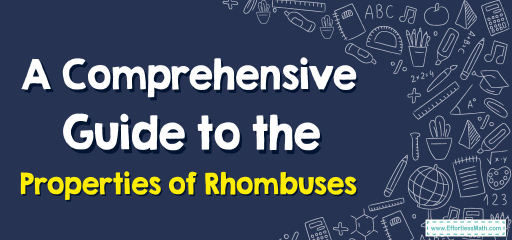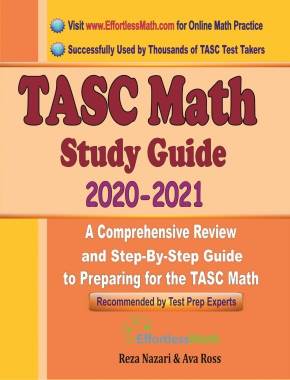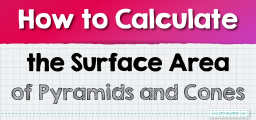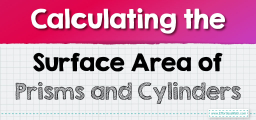A Comprehensive Guide to the Properties of Rhombuses

Examples
Practice Questions:
- A rhombus has diagonals measuring \(12\) units and \(16\) units. Compute its area.
- If one side of a rhombus is \(9\) units long, determine its perimeter.
- One diagonal of a rhombus is half the length of the other. If the longer diagonal is \(20\) units, find the area of the rhombus.
- Area: \( A = \frac{12 \times 16}{2} = 96 \) square units.
- Perimeter: \( P = 4 \times 9 = 36 \) units.
- The shorter diagonal is \(10\) units. Area: \( A = \frac{20 \times 10}{2} = 100 \) square units.
Original price was: $109.99.$54.99Current price is: $54.99.
Original price was: $109.99.$54.99Current price is: $54.99.
Original price was: $109.99.$54.99Current price is: $54.99.
Related to This Article
More math articles
- 8th Grade CMAS Math Worksheets: FREE & Printable
- How to Find Missing Angels in Quadrilateral Shapes? (+FREE Worksheet!)
- 6th Grade Common Core Math Practice Test Questions
- 7th Grade RICAS Math Worksheets: FREE & Printable
- Top 10 5th Grade NYSE Math Practice Questions
- How to Solve Trig Ratios of General Angles? (+FREE Worksheet!)
- Number Properties Puzzle – Challenge 21
- Are knowledge checks mandatory on ALEKS?
- How to Write Linear Equations From Y-Intercept and A Slope
- 10 Most Common 4th Grade Georgia Milestones Assessment System Math Questions




























What people say about "A Comprehensive Guide to the Properties of Rhombuses - Effortless Math: We Help Students Learn to LOVE Mathematics"?
No one replied yet.